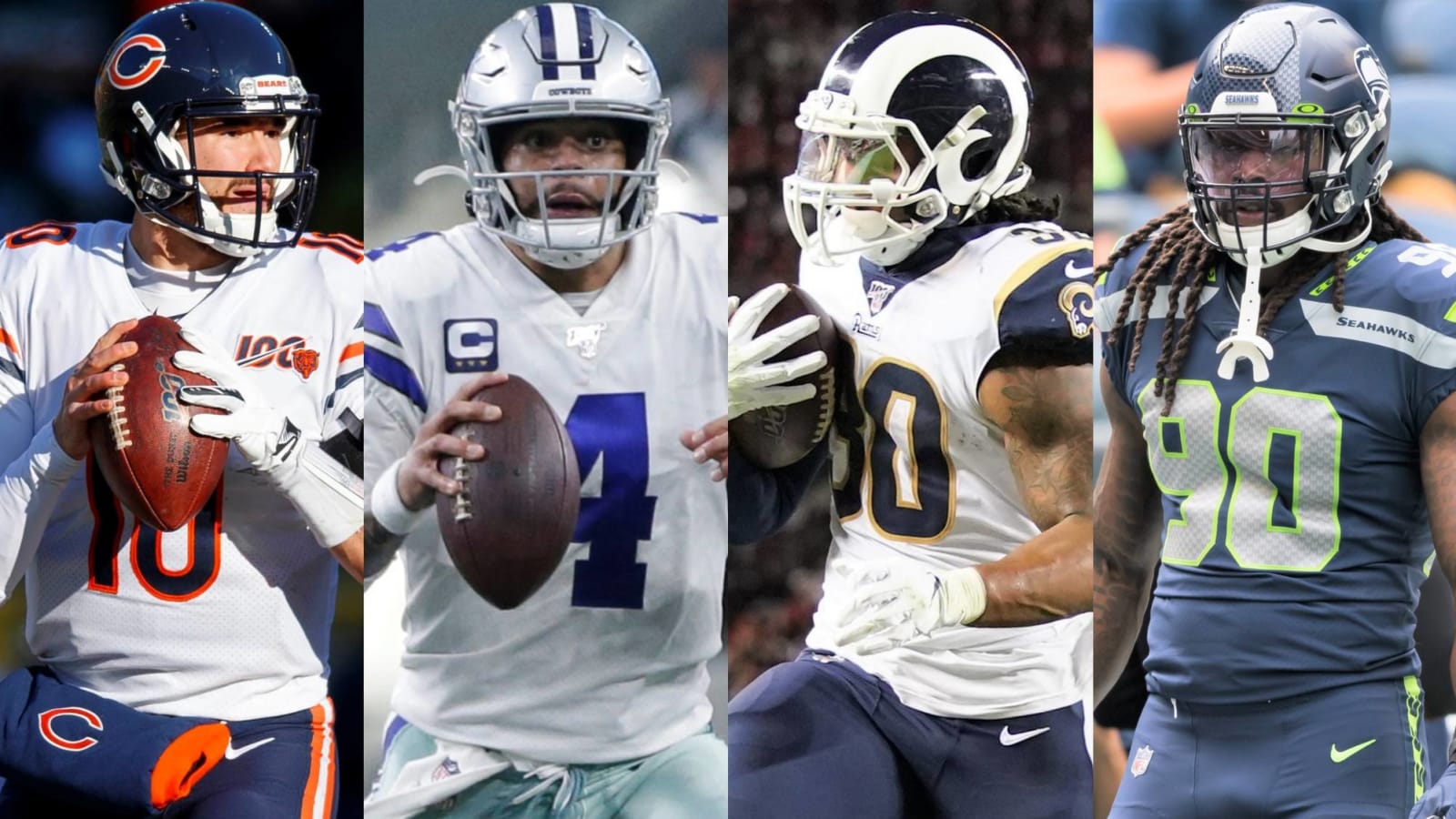
NFC team-by-team roster ratings, analysis, needs
In the NFC, contenders and non-contenders face an assortment of major decisions. Here are the key roster issues facing the 16 teams in the conference. Roster rating is based on players under contract for 2020.
ROSTER RATINGS:
8-10: In great shape short and long term.
6-7: On path to assembling top-caliber roster.
4-5: Some promise, but major questions exist.
1-3: Widespread improvement needed.
NOTE: Project cap space per OverTheCap.com.
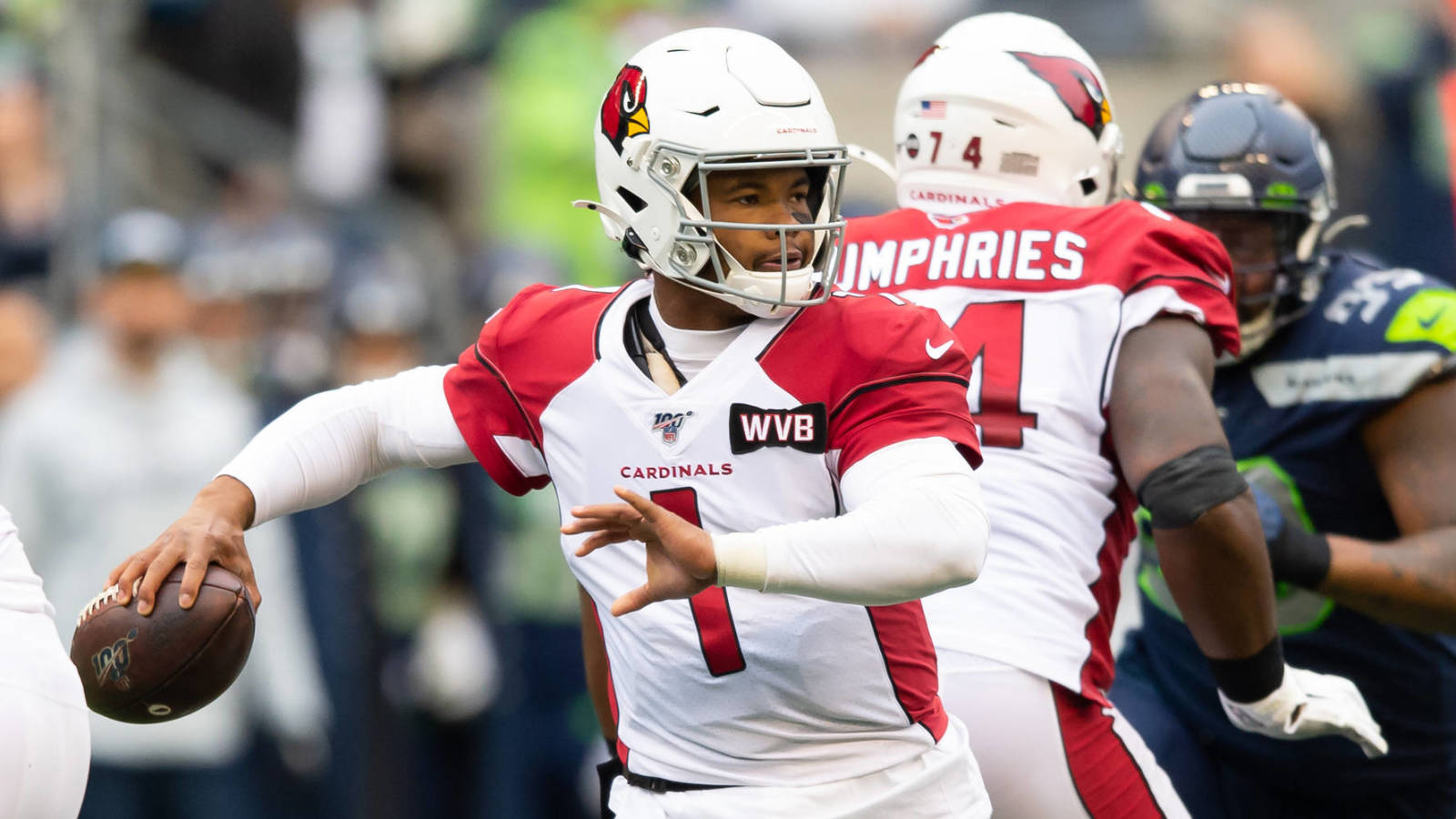
Arizona Cardinals (5-10-1) | Roster rating: 3
TOP NEEDS: Offensive line, secondary, defensive line
ROSTER ANALYSIS: The Kliff Kingsbury-Kyler Murray partnership turned heads at times in 2019, but the Cardinals’ lack of overall talent caught up to them early. Murray took 48 sacks as a rookie, with the 50 the Cardinals allowed being fifth-most in the league. Arizona’s trade for longtime Pittsburgh right tackle Marcus Gilbert produced zero regular-season snaps, and Gilbert joins left tackle D.J. Humphries and center A.Q. Shipley as pending free agents. Football Outsiders graded the Cardinals as the league’s No. 27 pass-protecting offensive line. The Cards did rank 10th in rushing, despite RB David Johnson’s unusual season, but they need help at a few spots up front. As fantasy owners surely recall, tight ends torched Arizona’s defense. The Cardinals allowed 16 touchdown passes to tight ends – at least six more than any other team. The team needs help at safety, alongside Budda Baker, and off-ball linebacker – where 2017 first-round pick Haason Reddick has been benched on multiple occasions. Overall, the Cardinals ranked 31st against the pass and have soon-to-be 30-year-old CB Patrick Peterson going into a contract year. Arizona’s defensive front, which has not really recovered from losing Calais Campbell and GM Steve Keim whiffing on Robert Nkemdiche, will be in need as well.
PROJECTED 2020 CAP SPACE: $70.5 million
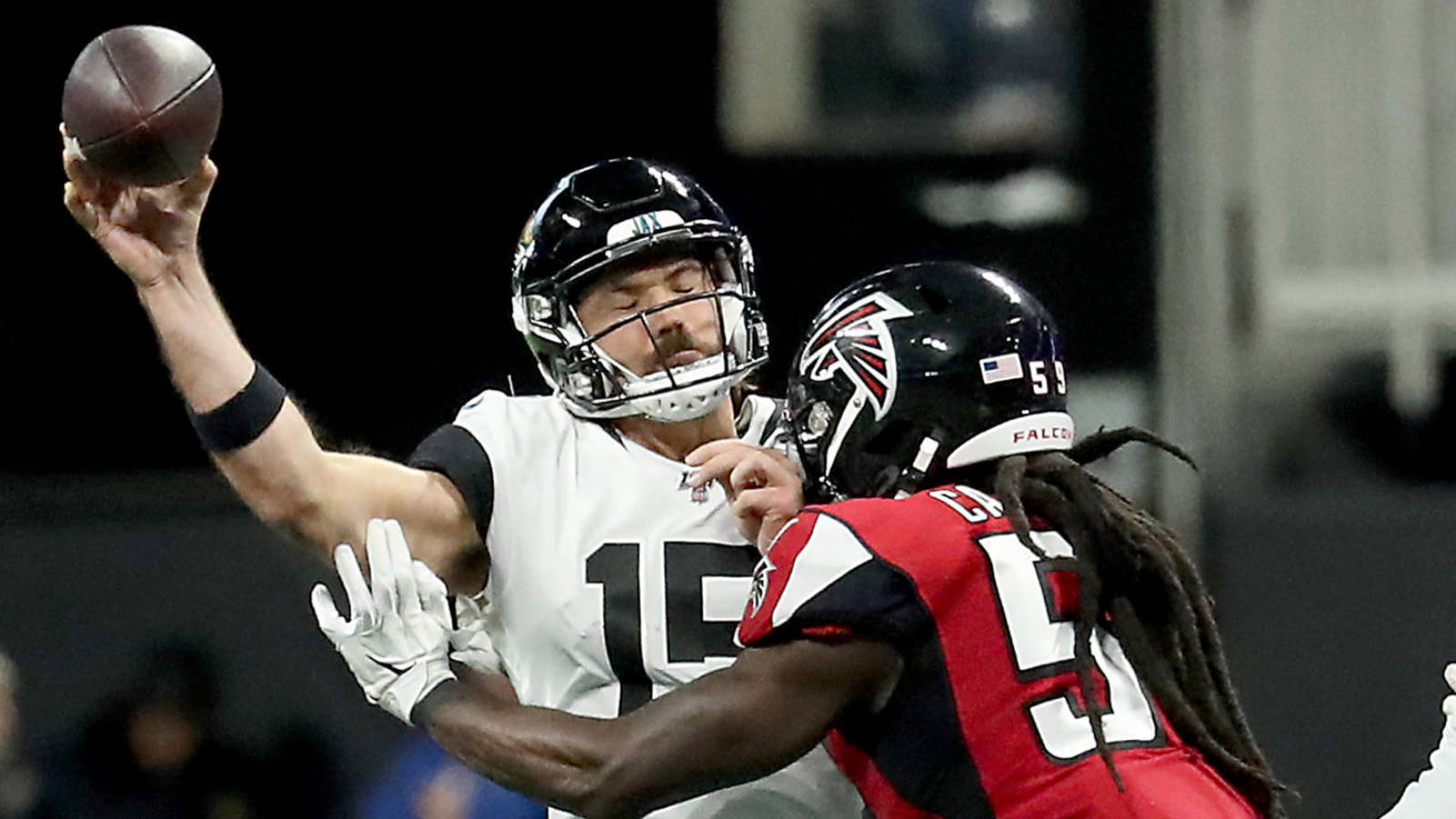
Atlanta Falcons (7-9) | Roster rating: 5
TOP NEEDS: Edge defender, cornerback, tight end
ROSTER ANALYSIS: Over half of Atlanta’s 2019 starting lineup featured members of their Super Bowl LI team. The Falcons still possess talent, as they showed down the stretch, but feature limited roster-improvement avenues. Owner Arthur Blank rewarded head coach Dan Quinn’s late-season turnaround by retaining him, but the veteran-laden team must back that up. The Falcons’ lucrative 2019 extensions leave them with scant cap space. It’s likely that tackles leader De’Vondre Campbell, considering the team paid another linebacker (Deion Jones) top dollar, will defect in free agency. Atlanta has not seen 2015 and ’17 first-round defensive end picks pan out. The Falcons will likely let 2016 All-Pro DE Vic Beasley leave in free agency, after three down years, and probably will not pick up DE Takk McKinley’s fifth-year option. McKinley finished with 3.5 sacks in 15 games. High-priced CB Desmond Trufant will be back after an abbreviated season, but second-year corner Isaiah Oliver did not fare well as a first-time starter. The Falcons ranked 26th in pass-defense DVOA. An injury prevented Austin Hooper from becoming the Falcons’ first 1,000-yard tight end, but it may take the franchise tag to keep Matt Ryan’s third option off the market. With limited resources, GM Thomas Dimitroff needs a top-flight draft.
PROJECTED 2020 CAP SPACE: $10.5 million
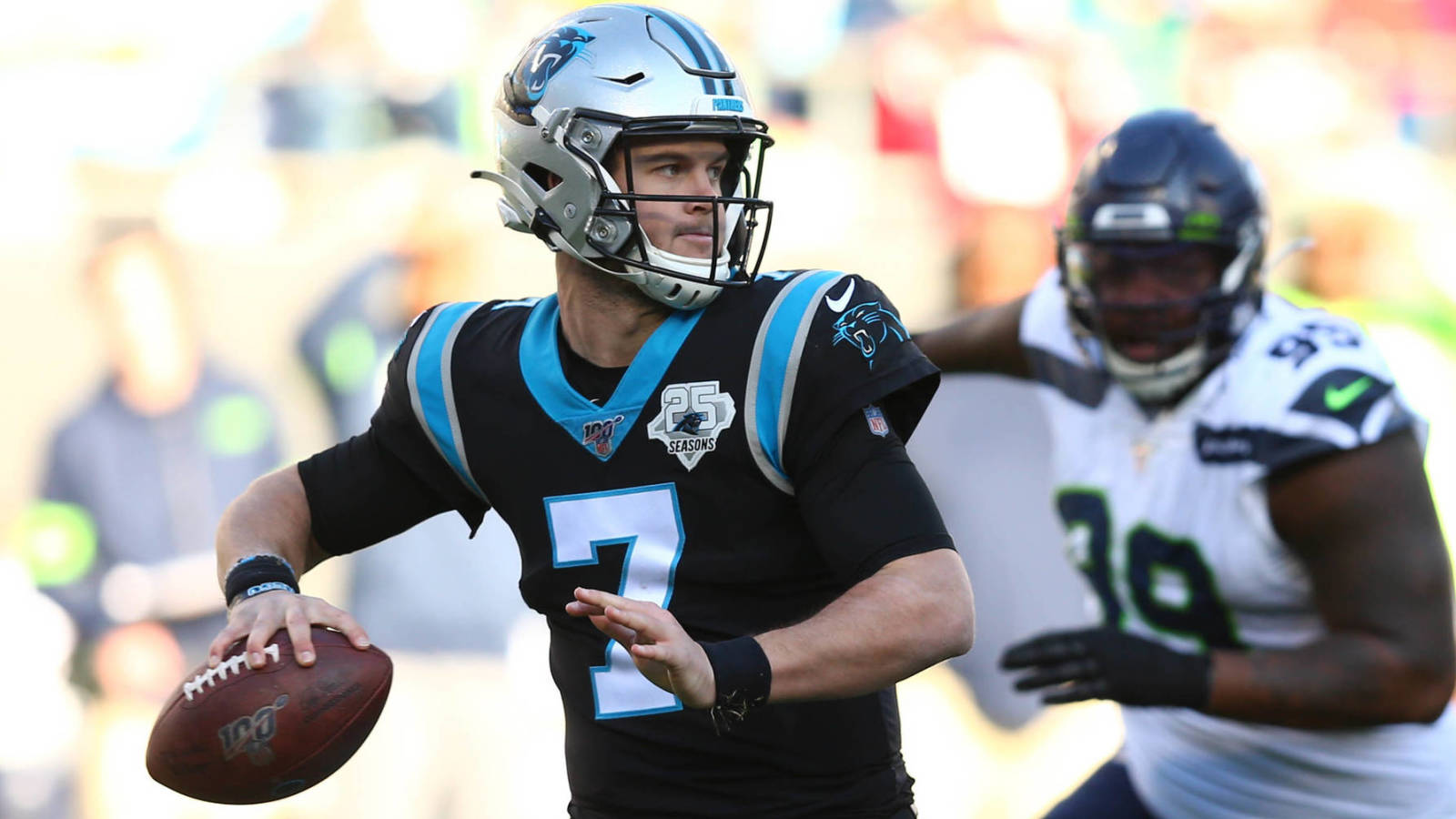
Carolina Panthers (5-11) | Roster rating: 5
TOP NEEDS: Cornerback, tight end, quarterback
ROSTER ANALYSIS: After some initial promise, Carolina became a sitting duck. This cost the most successful coach in franchise history his job. Owner David Tepper’s search to replace Ron Rivera will involve discussions about Cam Newton’s future. Given how Kyle Allen and Will Grier performed, the Panthers would seemingly need a 2013 Alex Smith-type trade package (two second-round picks) to move on from the 30-year-old former MVP. The through-2020 contract Newton signed in 2015 –- before the quarterback market’s late-2010s boom –- calls for a non-guaranteed $18.6 million salary. That’s manageable and gives the Panthers security if they choose not to pull the trigger on a passer in the first round. A more pressing need: cornerback, where top cover man James Bradberry is a free agent. Ex-second-round pick Donte Jackson has yet to prove a reliable starter, and the Panthers have little invested behind him. Bradberry should be Carolina’s top priority in free agency. TE Greg Olsen appears headed for the broadcast booth, and while 2018 fourth-rounder Ian Thomas had moments as a rookie, tight end looms as an auxiliary priority for the Panthers. Carolina, however, needs to save for RB Christian McCaffrey and LB Luke Kuechly extensions, which will limit its free-agency activity.
PROJECTED 2020 CAP SPACE: $34.1 million
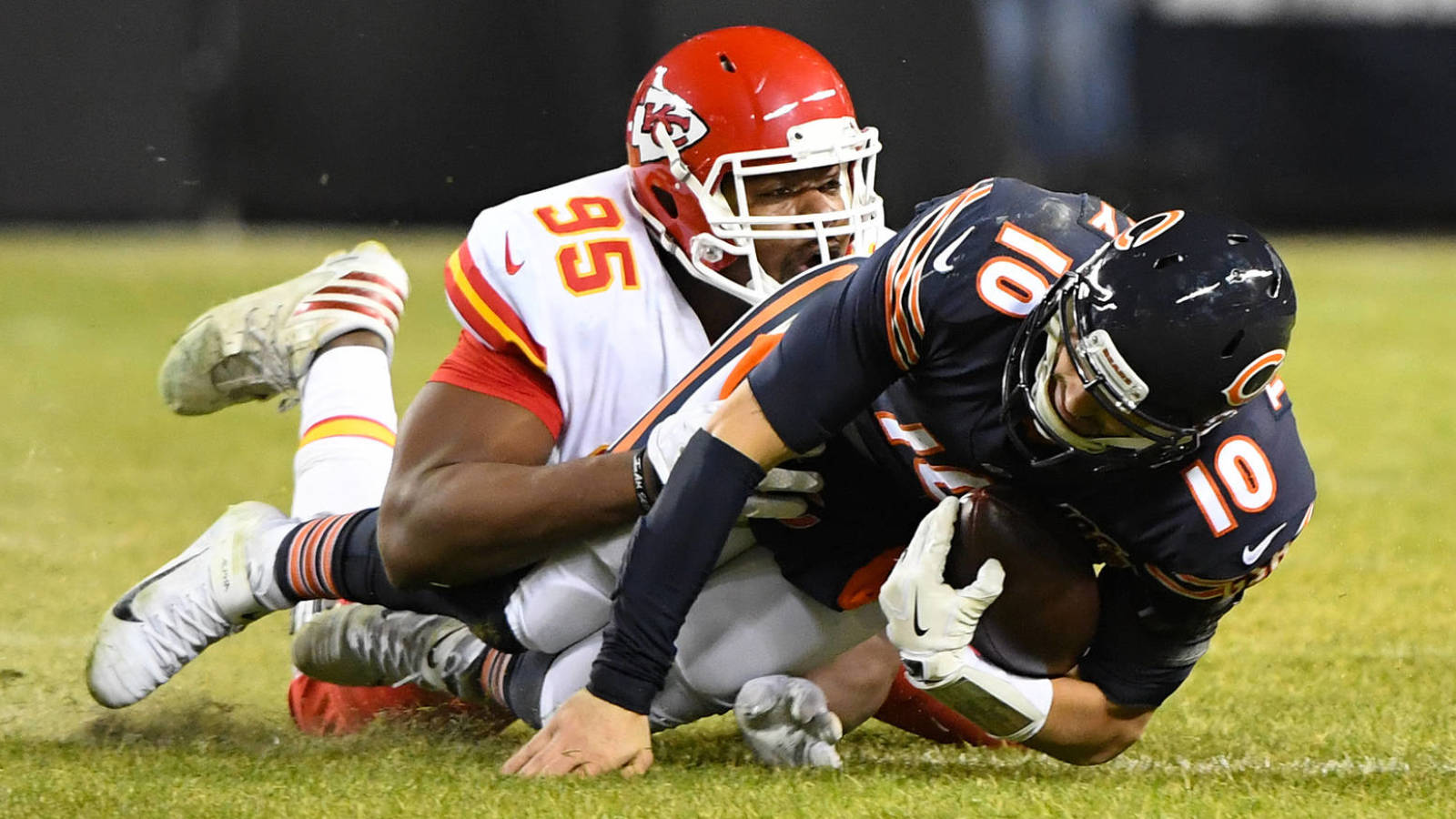
Chicago Bears (8-8) | Roster rating: 6
TOP NEEDS: Quarterback, tight end, offensive line
ROSTER ANALYSIS: Chicagoans reveled in info graphics that showed fragile center Sam Bowie being drafted before Michael Jordan 35 years ago but now receive nightmarish reminders of QB Mitchell Trubisky’s draft position. As Patrick Mahomes and Deshaun Watson continue to electrify, the Bears’ reputation takes hits. GM Ryan Pace, who selected Trubisky, must decide on the former No. 2 overall pick’s $25 million fifth-year option by May. It would seem odd for the Bears to pick that up, but they are in a bind at sports’ marquee position. Chicago lacks a first-round pick and ideally would select starters with its two second-rounders rather than trade one for a QB. But given Trubisky’s struggles, trades for Cam Newton (Panthers) or Andy Dalton (Bengals) – or even a free-agency pursuit of Philip Rivers (Chargers) – should be considered. Trubisky’s inconsistency threatens to squander a talented defense’s production window. The Bears also received next to nothing from tight ends this season. High-priced 2018 signing Trey Burton posted 84 receiving yards in eight games, and 2017 second-round pick Adam Shaheen has been a bust – just as 2017 signing Dion Sims was. Chicago’s offensive line will likely need a Kyle Long replacement at guard – once the ex-Pro Bowler-turned-surgery regular becomes a cap casualty – and could use a tackle to potentially upgrade from either Charles Leno or Bobby Massie. Football Outsiders graded the Bears as the NFL’s second-worst run-blocking line.
PROJECTED 2020 CAP SPACE: $11.9 million
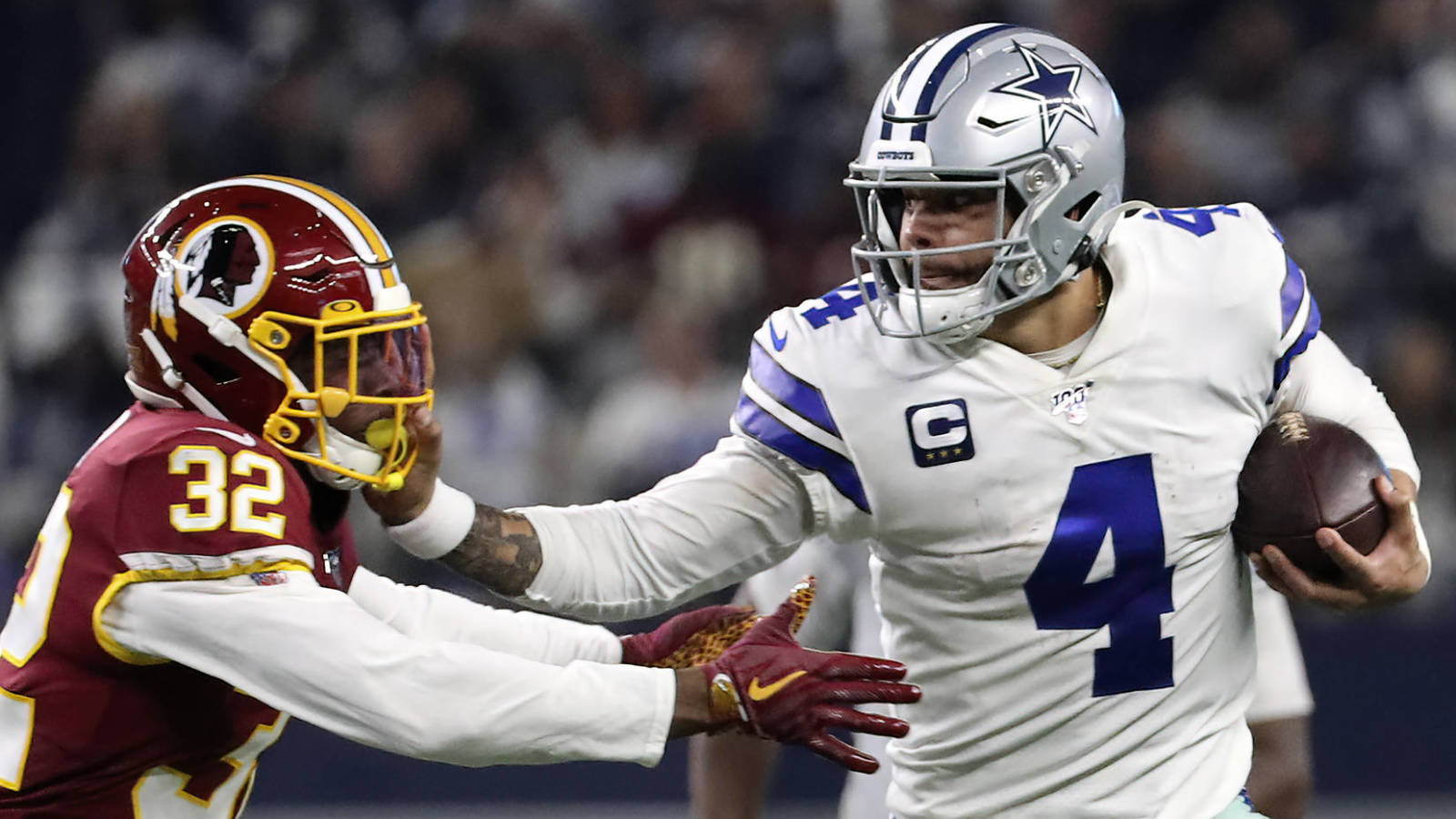
Dallas Cowboys (8-8) | Roster rating: 6
TOP NEEDS: Tight end, wide receiver, cornerback
ROSTER ANALYSIS: Technically, the Cowboys have a quarterback need. But Dak Prescott isn’t going anywhere. Jerry Jones made staggering financial commitments to this latest Cowboys core –- which is probably the franchise’s top nucleus since the 1990s’ Troy Aikman-led group –- and must shell out a near-record sum for Prescott. The Cowboys going 8-8 in Prescott’s final year of rookie-contract control represents one of the 2010s’ most disappointing seasons. Improving this roster with outside pieces will not be easy once Prescott signs a deal north of $33 million per year. The Cowboys also must determine their course of action with WR Amari Cooper. They traded a first-round pick for the once-inconsistent Raiders wideout, and his emergence helped Prescott ignite over the past 1½ seasons. The Cowboys could use the final-CBA-year provision to franchise-tag Prescott and transition-tag Cooper – if the NFL and the NFLPA cannot finalize a new deal by March. But bills will come due regardless. Dallas forking over a first-rounder and losing Cooper after his best season would be bad business. The team has lacked an impact safety for years, but with CB Byron Jones also a free agent, cornerback has usurped that in the franchise’s needs hierarchy. Jerry Jones paid DE DeMarcus Lawrence, OT La’el Collins, LB Jaylon Smith and RB Ezekiel Elliott in 2019 and has forthcoming Precott and Cooper business. Byron Jones might be the odd man out.
PROJECTED 2020 CAP SPACE: $86.1 million
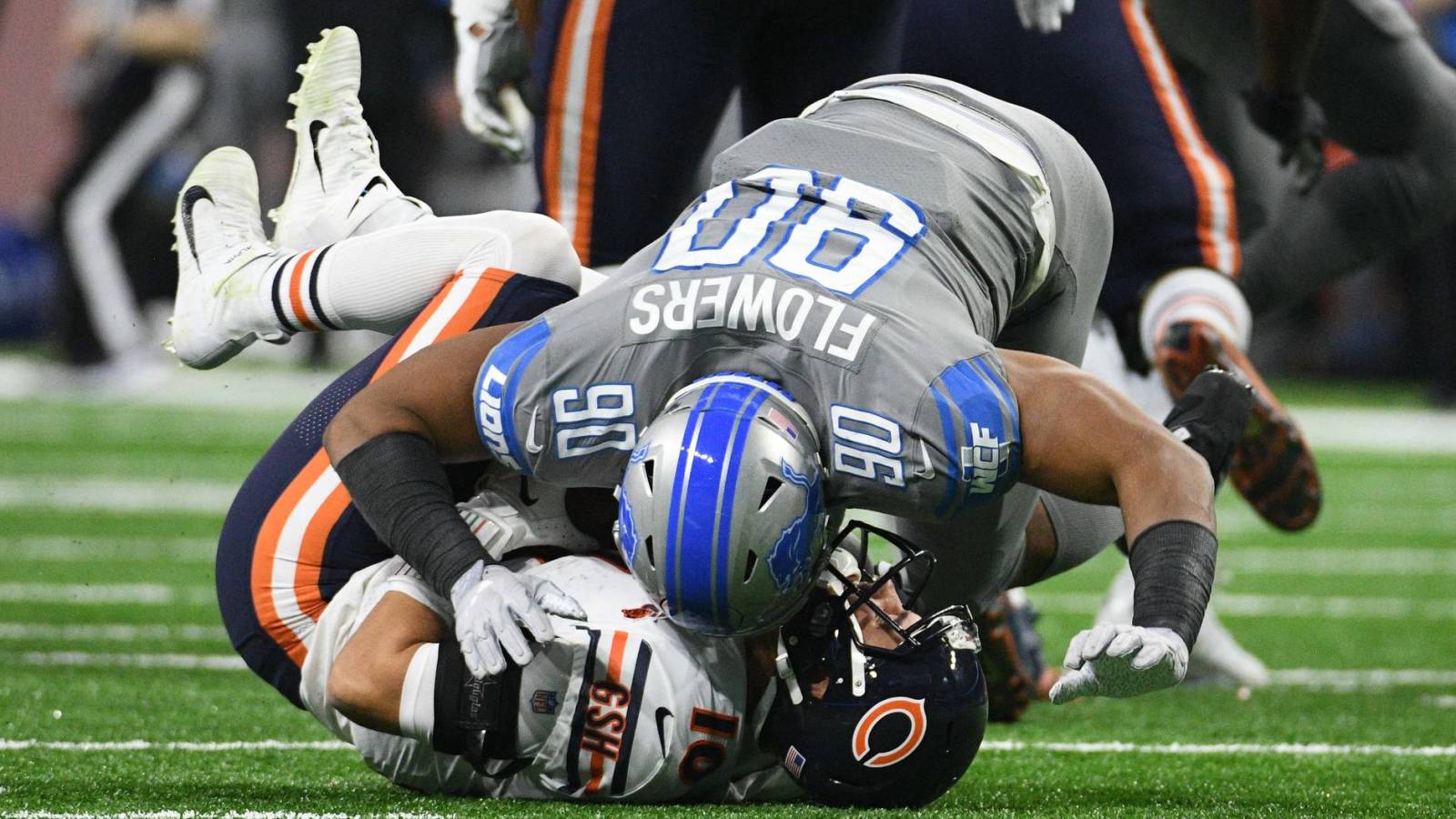
Detroit Lions (3-12-1) | Roster rating: 5
TOP NEEDS: Safety, cornerback, edge defender
ROSTER ANALYSIS: Allowed to keep his job after a 9-22-1 start –- with a roster that’s not exactly in rebuild mode -– Matt Patricia will enter 2020 on a boiling seat. Fourth-year GM Bob Quinn should not feel too comfortable, either. The Lions spent big on DE Trey Flowers and slot cornerback Justin Coleman in 2019 and had CB Darius Slay and DT Damon Harrison in their lineup. Detroit still ranked 31st in total defense and features needs at all three levels. The Lions traded safety Quandre Diggs before the bottom fell out and proceeded to struggle against passing attacks the rest of the way. Their Flowers overpay netted a modest seven sacks and 21 QB hits, but the $18 million-per-year defensive end is tethered to Detroit payrolls for a while. Flowers needs a sidekick pass rusher, however, and the Lions would need help on their defensive interior if Harrison opts to retire. Slay is a 2021 free agent who may be a trade chip if he and the Lions cannot find common ground on a third contract in 2020. This would obviously leave Detroit incredibly thin at corner. The Lions need help at linebacker as well, but that might not even crack their top three issues on this side of the ball. Any needs on offense look like back-burner issues compared to the disastrous state in which Detroit’s defense resides.
PROJECTED 2020 CAP SPACE: $45.6 million
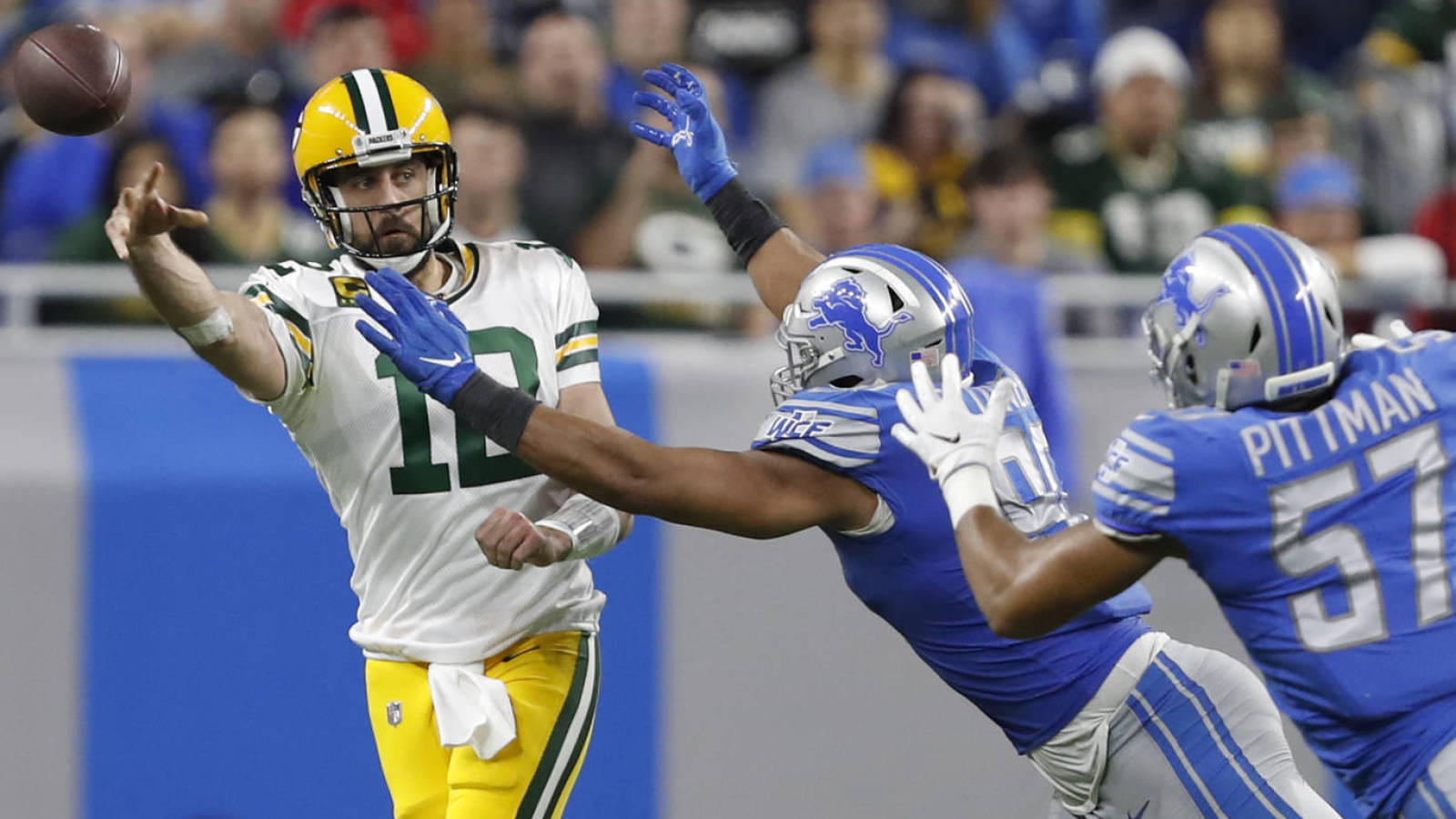
Green Bay Packers (13-3) | Roster rating: 8
TOP NEEDS: Wide receiver, interior defender, linebacker
ROSTER ANALYSIS: Deviating from years of previous GM Ted Thompson’s refusal to use free agency as a roster-building tool, successor Brian Gutekunst has run wild on the market. His big 2019 expenses –- OLBs Za’Darius Smith, Preston Smith and safety Adrian Amos -– helped produce a bounce-back season. But Green Bay sits as a vulnerable No. 2 seed in part because of its inability to generate consistency from any pass-catcher not named Davante Adams. The Packers let Randall Cobb walk and watched as he proved far more capable in 2019 than any of his Green Bay replacements. While 2018 UDFA Allen Lazard has shown he’s a keeper as a role player, no non-Adams pass-catcher surpassed 500 receiving yards. TE Jimmy Graham being near retirement has magnified this issue. Whether it comes in the draft or free agency, QB Aaron Rodgers needs more help as he moves into his late 30s. While Gutekunst gave big money to his edge-rushing Smiths, the Packers’ defensive line does not house a big contract. That should change when the team attempts to retain free-agent interior defender Kenny Clark. The defensive tackle franchise tag will cost approximately $16 million; the Packers cannot let their impact inside presence hit the market. Green Bay has not been big on paying off-ball linebackers, so it will also be interesting to see how the franchise proceeds with top tackler Blake Martinez.
PROJECTED 2020 CAP SPACE: $27.7 million
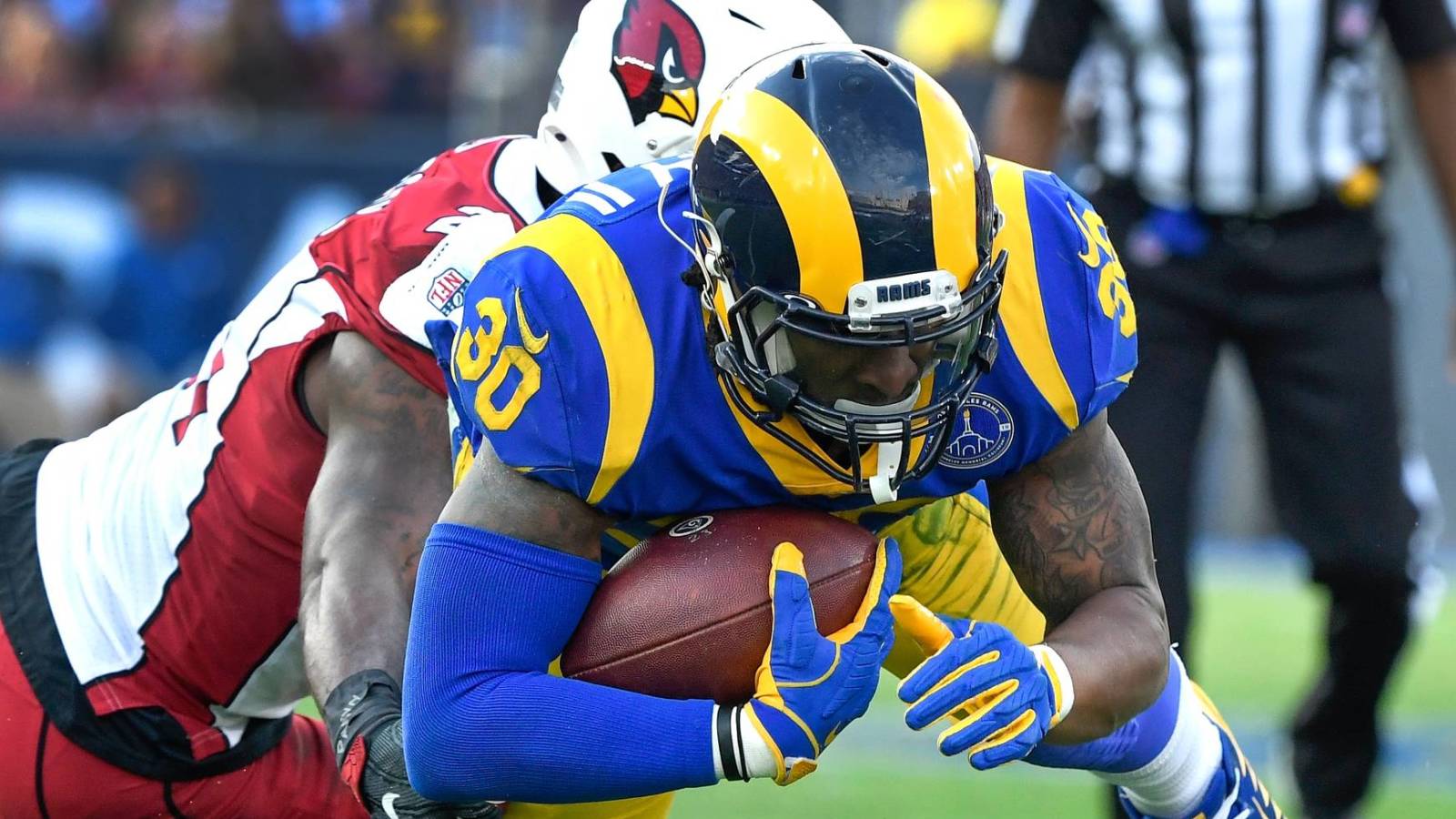
Los Angeles Rams (9-7) | Roster rating: 6
TOP NEEDS: Offensive line, edge defender, linebacker
ROSTER ANALYSIS: Perhaps the NFL’s most fascinating situation, the Rams doubling down on their pay-the-stars/screw-the-consequences strategy has them in long-term peril. Los Angeles saw QB Jared Goff, RB Todd Gurley and WR Brandin Cooks fail to live up to their lofty prices in 2019. Their contracts count for over a third of the team’s 2020 payroll. The Rams are about to give CB Jalen Ramsey a market-resetting contract as well; that agreement will certainly come at a strange time given what’s transpired with recent investments. Because of these deals, it will again be difficult for the Rams to retain top role players. After losing guard Rodger Saffold and safety Lamarcus Joyner, GM Les Snead traded CB Marcus Peters, who could well end this season as an All-Pro. The Rams have high-end role cogs – defensive lineman Michael Brockers, linebacker Cory Littleton, edge defender Dante Fowler and center Austin Blythe – flooding their free-agent list. Left tackle Andrew Whitworth is also 38 and a free agent. The Ramsey trade leaves the Rams without a first-round pick until 2022. How the Rams keep this bubble from bursting will be a key offseason subplot, because this situation will require impeccable drafting to keep afloat. And the Rams will need much better work from Goff to produce another Super Bowl contender.
PROJECTED 2020 CAP SPACE: $25.5 million
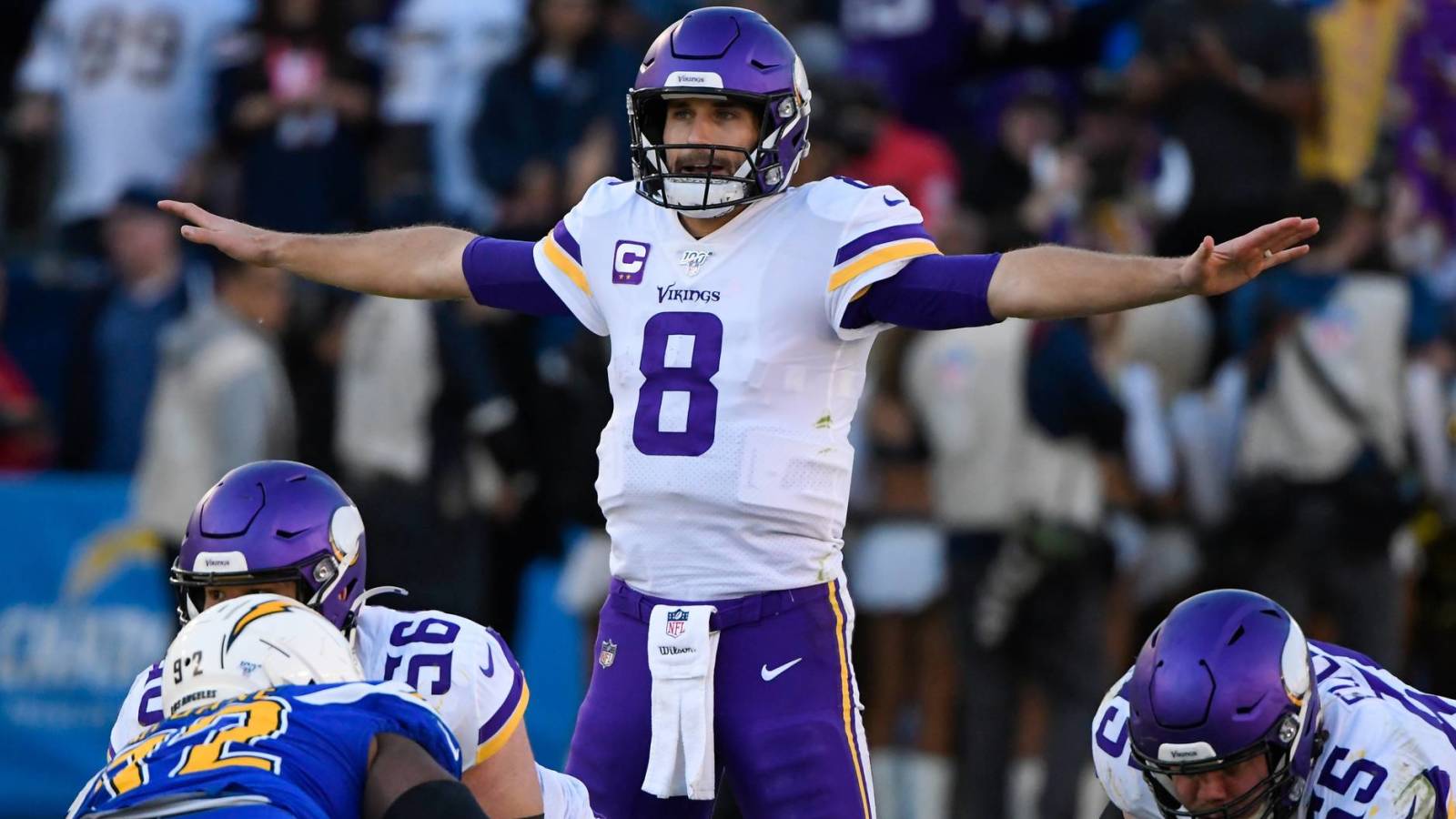
Minnesota Vikings (10-6) | Roster rating: 8
TOP NEEDS: Safety, cornerback
ROSTER ANALYSIS: Making a seemingly untenable situation work for years, the Vikings remain an NFC power despite perennially being up against the salary cap. GM Rick Spielman continues to add pricey extensions to the franchise’s cap sheet. QB Kirk Cousins’ historically player-friendly contract will remain on Minnesota’s books through next season, though the parties will likely discuss an extension soon. While the Vikings do not have much wiggle room in 2020, RB Dalvin Cook’s contract year, there are not many glaring needs across this roster. Successful offensive line investments have helped tremendously to shore up previous deficiencies. But Minnesota’s secondary will need attention. Top corner Trae Waynes is a free agent; so is breakout safety Anthony Harris. The Vikings have three first-round corners on their roster, and Waynes has surpassed Xavier Rhodes as the team’s best. Spielman paid Rhodes two years ago but cutting the soon-to-be 30-year-old defender after a down season would create $8.1 million in cap space. That would help to extend Waynes, and any lucrative re-up should not be put past the Vikings. Safety Harrison Smith’s high salary may force the Vikings to let Harris walk, meaning they would likely need to turn to the draft here. But this remains one of the league’s best rosters; how the Vikings fare in the playoffs will impact how they view its viability.
PROJECTED 2020 CAP SPACE: $2.7 million over the cap
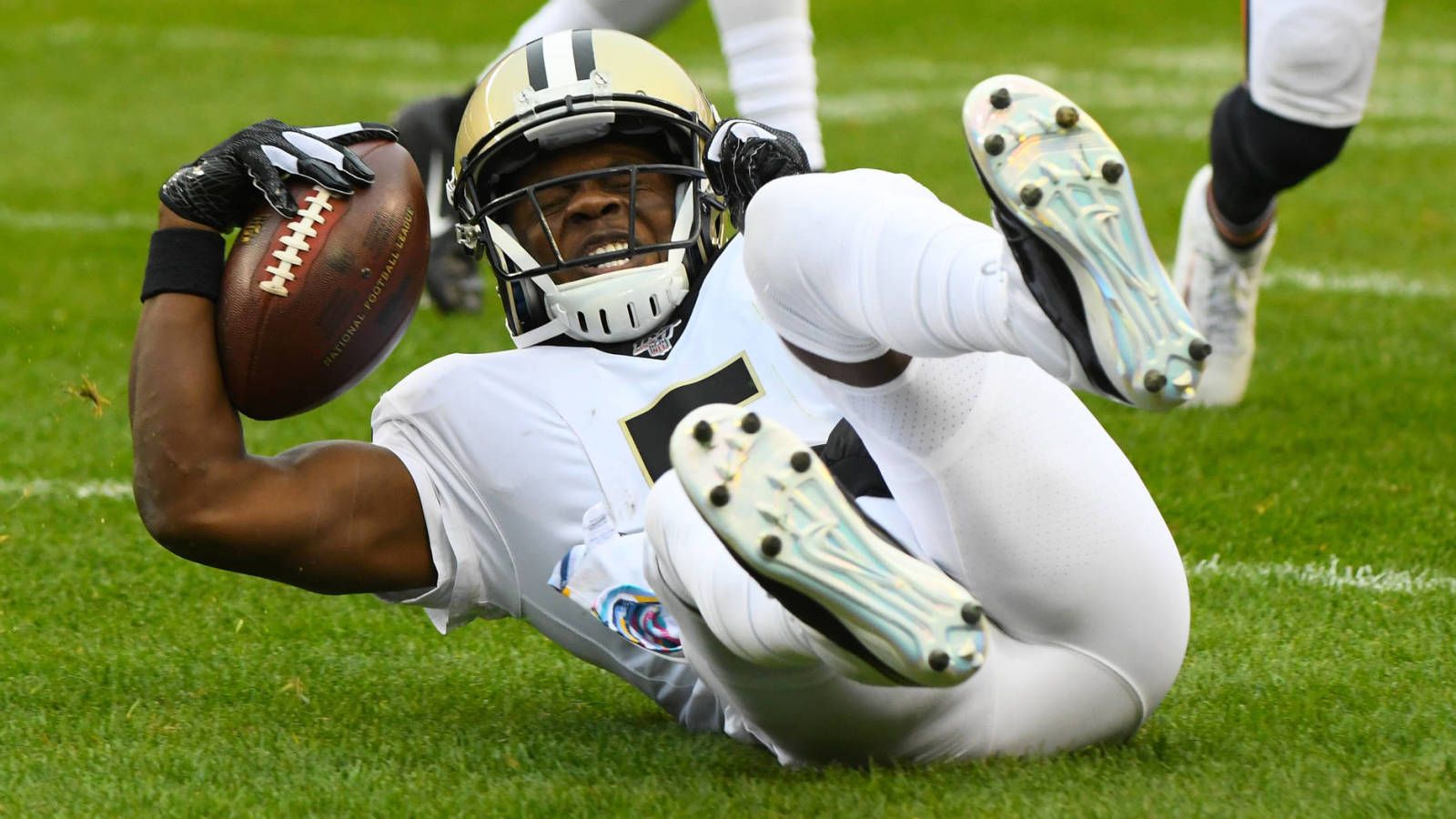
New Orleans Saints (13-3) | Roster rating: 8
TOP NEEDS: Wide receiver, quarterback, safety
ROSTER ANALYSIS: The Saints’ 2017 draft opened the door to a late-2010s re-emergence, and the team has steadily built a balanced dynamo after its defenses let down QB Drew Brees for years. Brees’ status will again overshadow everything else, but given the way the league’s all-time passing kingpin has played since returning from his thumb injury, it’s a safe bet the Saints can count on him to return for his age-41 season. A free agent perhaps in name only, Brees is submitting a longevity run that rivals Tom Brady’s far more lauded pursuit. Teddy Bridgewater is also a free agent again. Did Sean Payton see enough from Brees’ backup this season to give him a raise to continue his mid-career internship? If not, the Saints will need to get serious soon about identifying Brees’ successor. The Saints’ offense has worked without a true No. 2 wide receiver, but Michael Thomas could use more reliable help. WR Ted Ginn’s contract expires, which should mean a bigger role for Tre’Quan Smith. Jared Cook has also helped balance out the passing attack, so WR2 is not a major concern. Four-year starter Vonn Bell’s UFA status also makes safety an issue, but this Saints offseason will be more about longer-term planning than filling holes. They will have to begin extension discussions with 2017 draftees Alvin Kamara (RB), Marcus Williams (safety) and perhaps Marshon Lattimore (CB).
PROJECTED 2020 CAP SPACE: $11.1 million
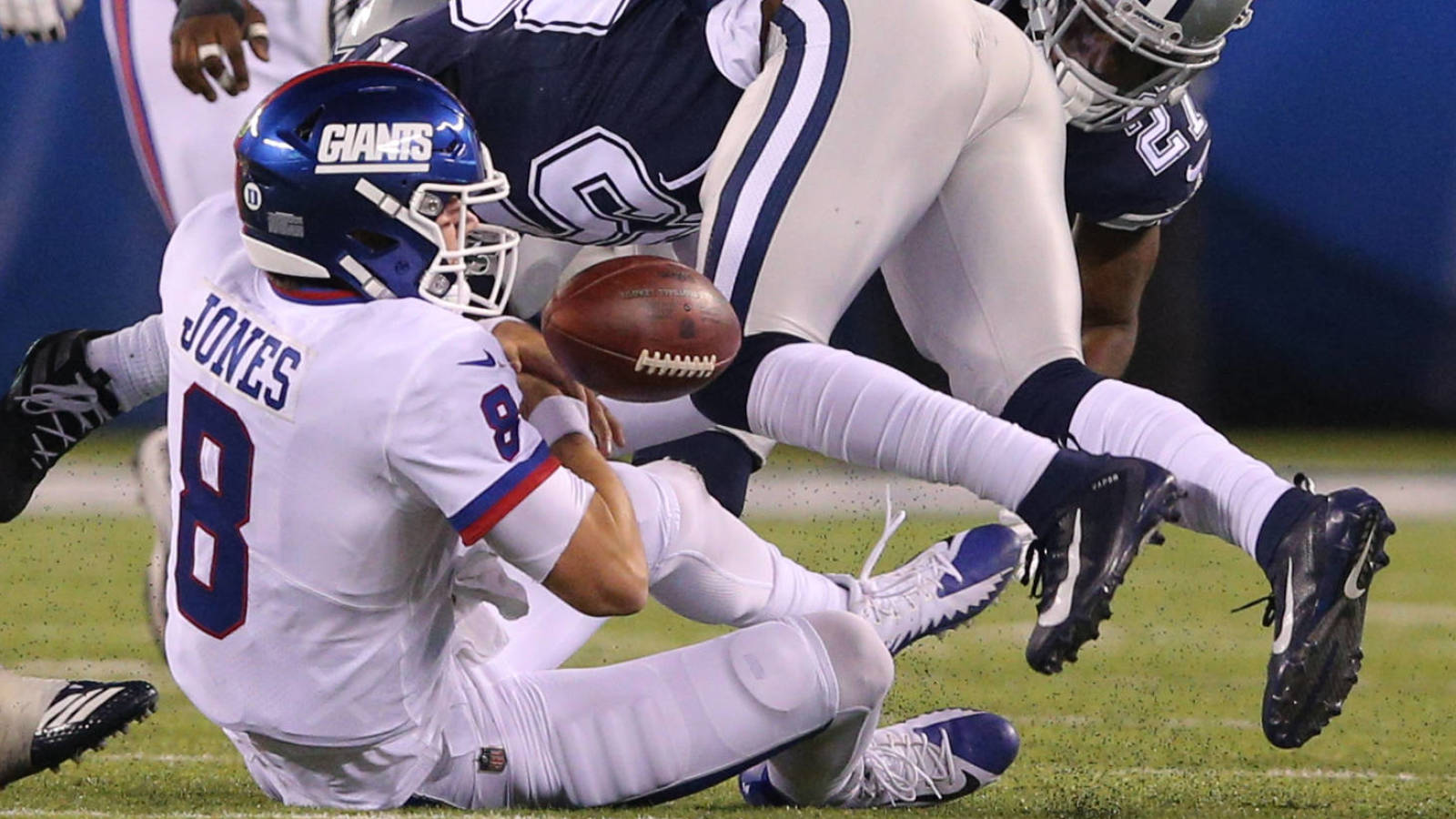
New York Giants (4-12)
TOP NEEDS: Edge defender, tackle, cornerback
ROSTER ANALYSIS: GM Dave Gettleman has used several veterans to patch up key spots yet his roster still features needs at some of those positions. The Giants, who fired head coach Pat Schurmur on Monday, are desperate for an impact edge rusher, and the most obvious avenue toward that -– a No. 2 overall Chase Young pick -– closed after a meaningless Week 16 overtime win. Gettleman took heat for passing on edge rusher Josh Allen, whom the Jaguars have unleashed, to draft QB Daniel Jones. The latter showed intermittent promise, amid a tour de force fumbling season, but will not be able to do much with a roster this shaky. Markus Golden was a nice flier for the Giants, but the ex-Cardinal edge rusher is a free agent again. After a 10-sack season, Golden’s price has gone up. This year’s free agency may include most of the following pass rushers: Jadeveon Clowney, Arik Armstead, Yannick Ngakoue, Dante Fowler, Bud Dupree and Matt Judon. Most are realistic candidates to evade the clutches of the franchise tag. Holding the No. 4 overall pick, the Giants will be linked to top tackles -– with right tackle Mike Remmers a free agent and left tackle Nate Solder‘s contract a sunk cost. And 2019 first-round cornerback DeAndre Baker endured a brutal season. With Janoris Jenkins gone and a third corner having yet to emerge, the Giants have multiple needs here too.
PROJECTED 2020 CAP SPACE: $68.9 million
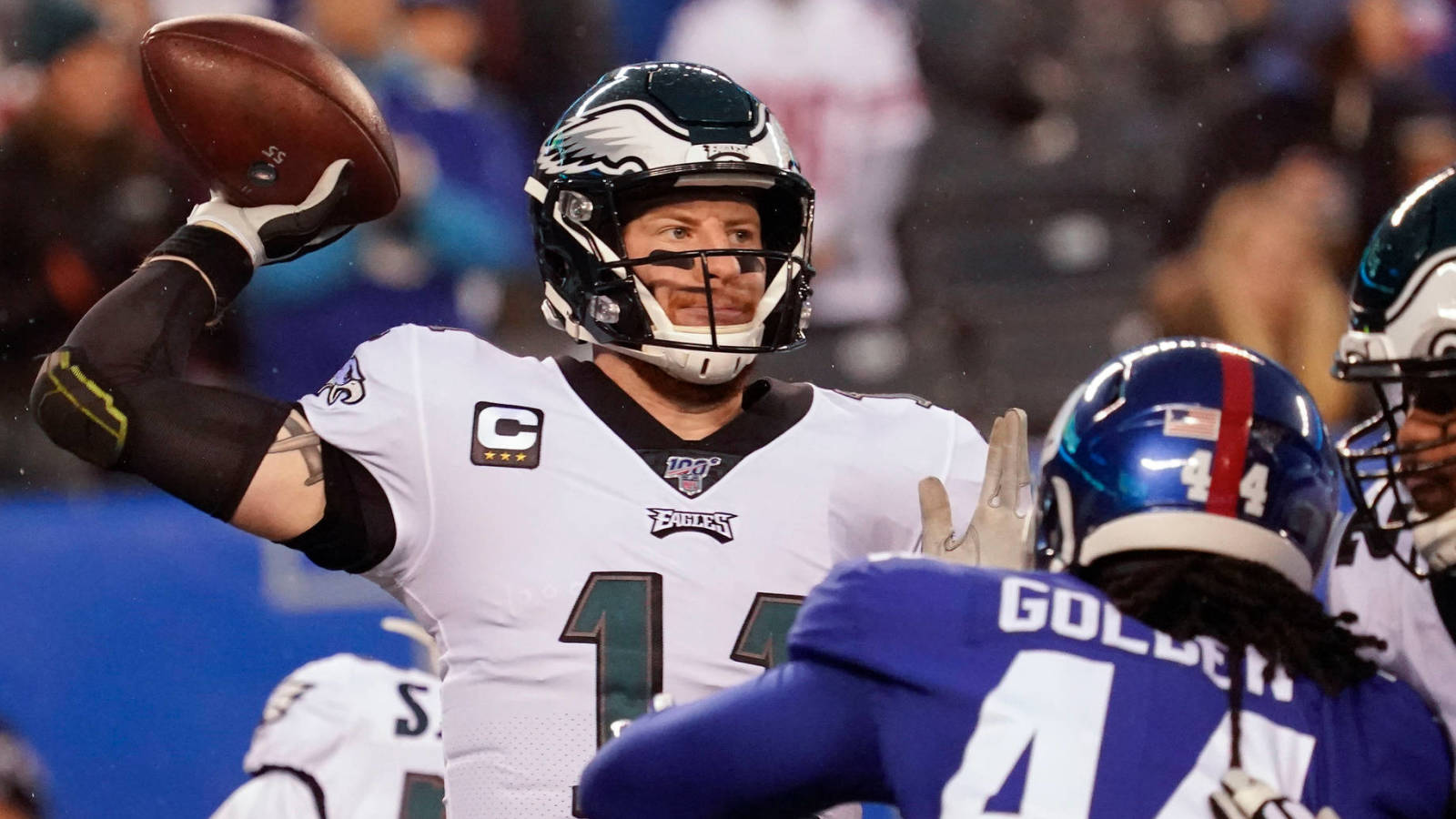
Philadelphia Eagles (9-7) | Roster rating: 7
TOP NEEDS: Wide receiver, cornerback, safety
ROSTER ANALYSIS: QB Carson Wentz steering the Eagles to the playoffs will enhance his reputation, because Philadelphia has endured one of the worst wide receiver seasons a playoff entrant has encountered. Wentz’s top four pass-catchers may be out of commission in Round 1, and GM Howie Roseman’s Alshon Jeffery and DeSean Jackson extensions do not look good. The contract structures of each 30-something target tether them to Philadelphia’s 2020 payroll, and with Nelson Agholor a free agent after a bad contract year, the Eagles will be a near-lock to use a high draft choice on a wideout. The Eagles opted against investing in a veteran cornerback this offseason and paid for it. Their crew of young players has not produced a dependable cover man, and Ronald Darby is again due for free agency. This year’s corner market could include Byron Jones, James Bradberry, Chris Harris, Trae Waynes, Bradley Roby and Logan Ryan. Many of these defenders will hit the market, leaving the Eagles with an interesting list of candidates to help a defense that finished 19th against the pass. Philadelphia’s longtime safety tandem of Malcolm Jenkins and Rodney McLeod may splinter as well, with the latter a free agent. Overall, Roseman’s aging roster is in good shape for 2020. But its perimeter needs cannot be ignored.
PROJECTED 2020 CAP SPACE: $35.7 million
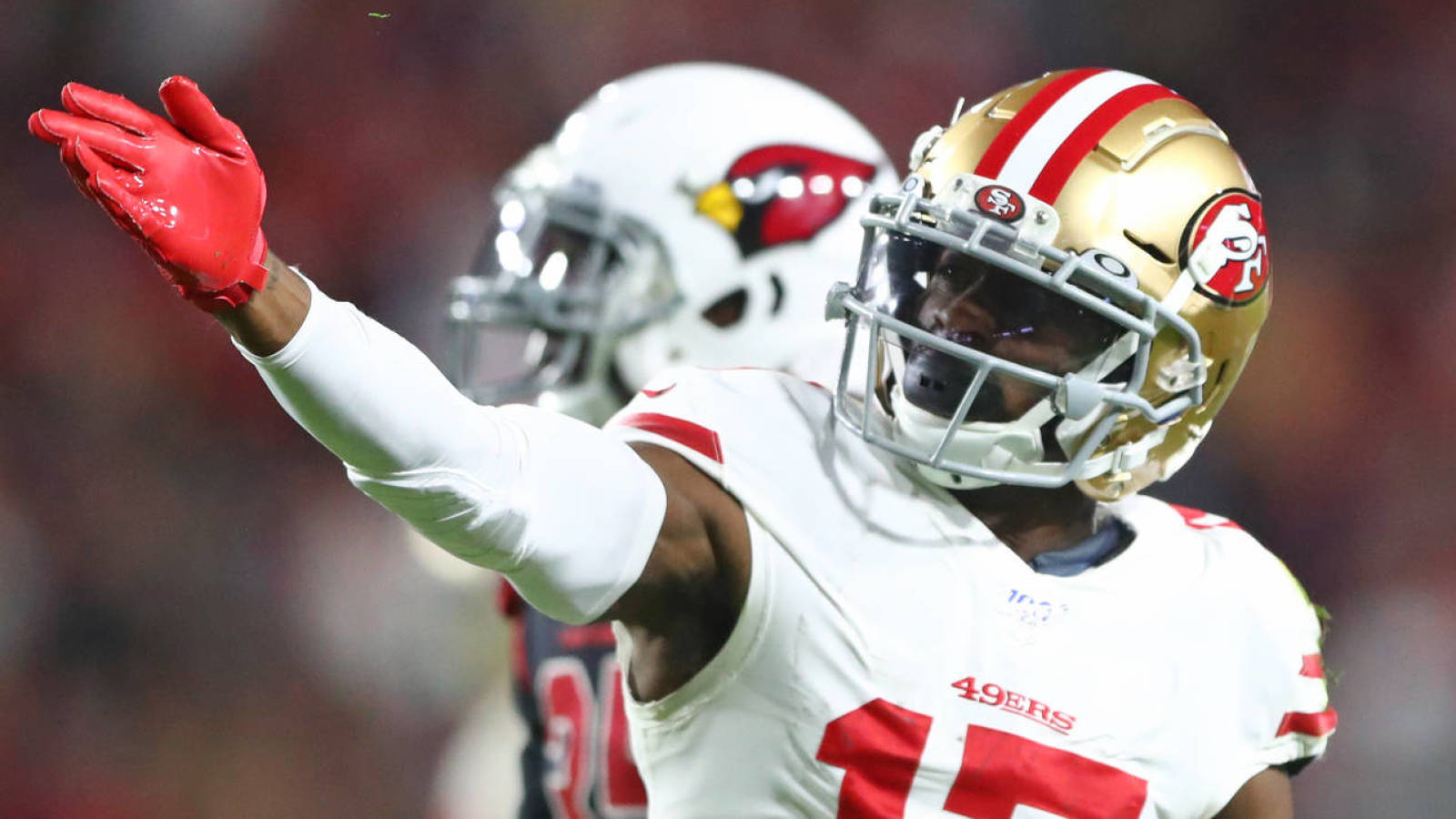
San Francisco 49ers (13-3) | Roster rating: 9
TOP NEEDS: Wide receiver, safety, left tackle
ROSTER ANALYSIS: After two trial-run seasons produced little of consequence, the Kyle Shanahan-John Lynch regime rewarded ownership with the team’s best record in eight years. San Francisco has built a roster nearly on par with those from the Jim Harbaugh era, and most of the key players will be back. The 49ers will have top-market extensions set for TE George Kittle and DT DeForest Buckner and built a defensive line so talented it could lose one of its impact defensive ends and still manage. The franchise’s Dee Ford trade yielded an injury-ravaged season, but the ex-Chief’s frontloaded extension opens the door to the prospect of jettisoning him and using the funds to place the franchise tag on contract-year wonder Arik Armstead. As for immediate needs, the 49ers are in the final weeks of WR Emmanuel Sanders’ rental deal. The 32-year-old wideout has provided a considerable spark, and with a weak-looking receiver market, the 49ers could opt for a short-term deal to keep the ex-Super Bowl starter paired with the emerging Deebo Samuel. Chess piece Jimmie Ward is in a contract year as well, leaving a need at safety. The former first-round pick has stayed healthy and earned a raise. No immediate concern exists on the 49ers’ O-line, but tackle Joe Staley’s two-injury age-35 season should generate some discussion about adding an heir apparent.
PROJECTED 2020 CAP SPACE: $23.6 million
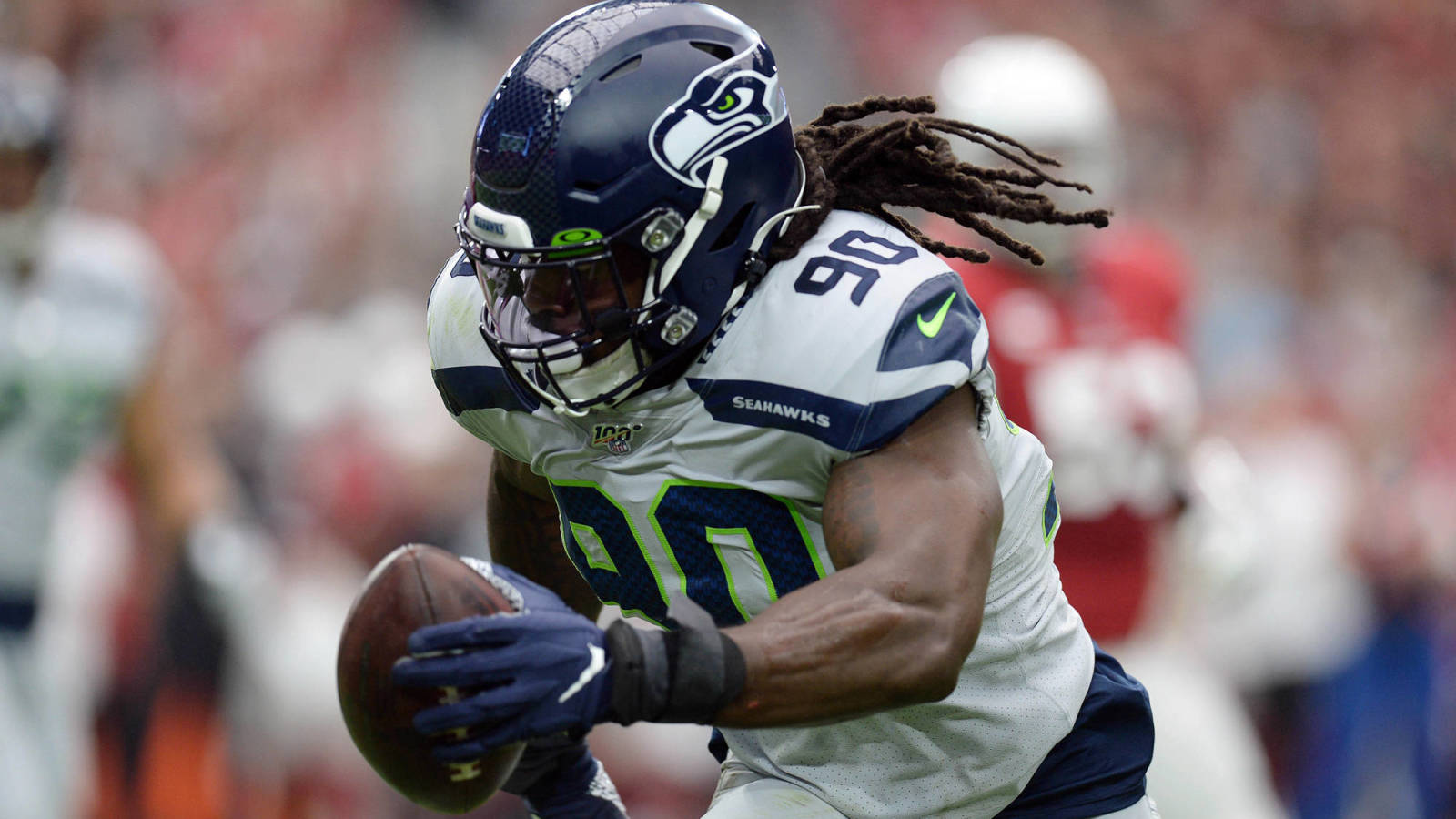
Seattle Seahawks (11-5) | Roster rating: 7
TOP NEEDS: Defensive line, offensive line, tight end
ROSTER ANALYSIS: Another playoff season has revealed the Pete Carroll-John Schneider tandem to be one of the NFL’s best. The Seahawks have seen numerous revered performers leave over the past two years but were a half-yard away from a 12-4 season (albeit with a plus-7 scoring differential). DE Jadeveon Clowney, however, has not filled the void the franchise created upon trading Frank Clark. The former finished with just three sacks and 13 quarterback hits and battled another injury. This combination may well affect his market, but the Seahawks –- who cannot apply the franchise tag to Clowney -– may concur with the Texans’ thinking and let the former No. 1 overall pick walk. Seattle would recoup perhaps a third-round compensatory pick in doing so. DT Jarran Reed failed to match his dynamic 2018 work (10 sacks), finishing a suspension-shortened regular season with two sacks in advance of his free agency. The Seahawks’ once-vaunted pass rush produced just 28 sacks (31st) and has multiple gaping holes. Seattle’s offensive line has RT Germain Ifedi and guard D.J. Fluker set for free agency, and LT Duane Brown will be 35 in 2020. A long-understaffed blocking contingent will require upgrades, even as QB Russell Wilson thrives regardless. Will Dissly’s second severe injury leaves the promising tight end a question, and with that position playing a key role in Seattle’s aerial offense, adding help would be prudent.
PROJECTED 2020 CAP SPACE: $66 million
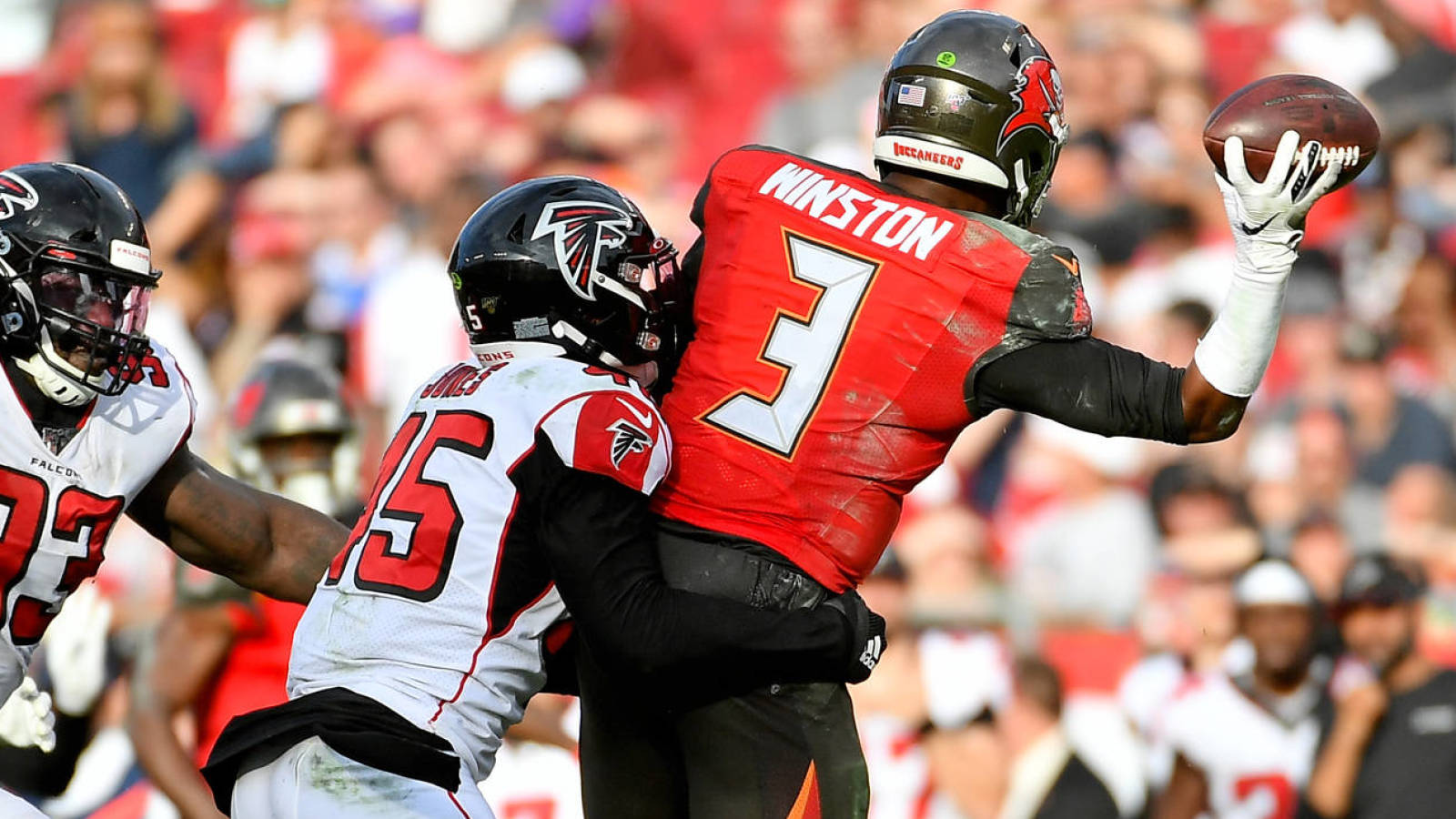
Tampa Bay Buccaneers (7-9) | Roster rating: 4
TOP NEEDS: Quarterback, edge defender, interior defender
ROSTER ANALYSIS: NFL RedZone’s top attraction, the Buccaneers face one of the more unusual quandaries in recent memory. Jameis Winston finishing with the league’s first 30-touchdown/30-interception season (with 5,109 yards) makes the 2015 No. 1 pick one the most volatile investments in NFL history. Head coach Bruce Arians’ comments point to Winston returning, but anything beyond the franchise tag or a short-term, high-value deal would be a massive risk for Tampa Bay. Depending on how the CBA talks go, the Bucs might need their tag for OLB Shaq Barrett. Arians acknowledged the ex-Bronco backup, and one of the best buy-low bets in free agency’s 27-year history, is not going anywhere. Barrett’s 19.5-sack season was among the most stunning in the statistic’s 38-season run. The Bucs can either tag Barrett at $16 million (the linebacker rate), while he would surely argue he’s a defensive end (which calls for a roughly $18M tag), or submit an offer of around $20M per year to keep the franchise’s season sack record-holder long term. The Bucs will need to make multiple edge moves, with the severe-injury-prone Jason Pierre-Paul and 2018 waiver claim Carl Nassib set for free agency. While Tampa Bay’s secondary could use assistance, DT Ndamukong Suh’s UFA status leaves a void up front.
PROJECTED 2020 CAP SPACE: $88.9 million
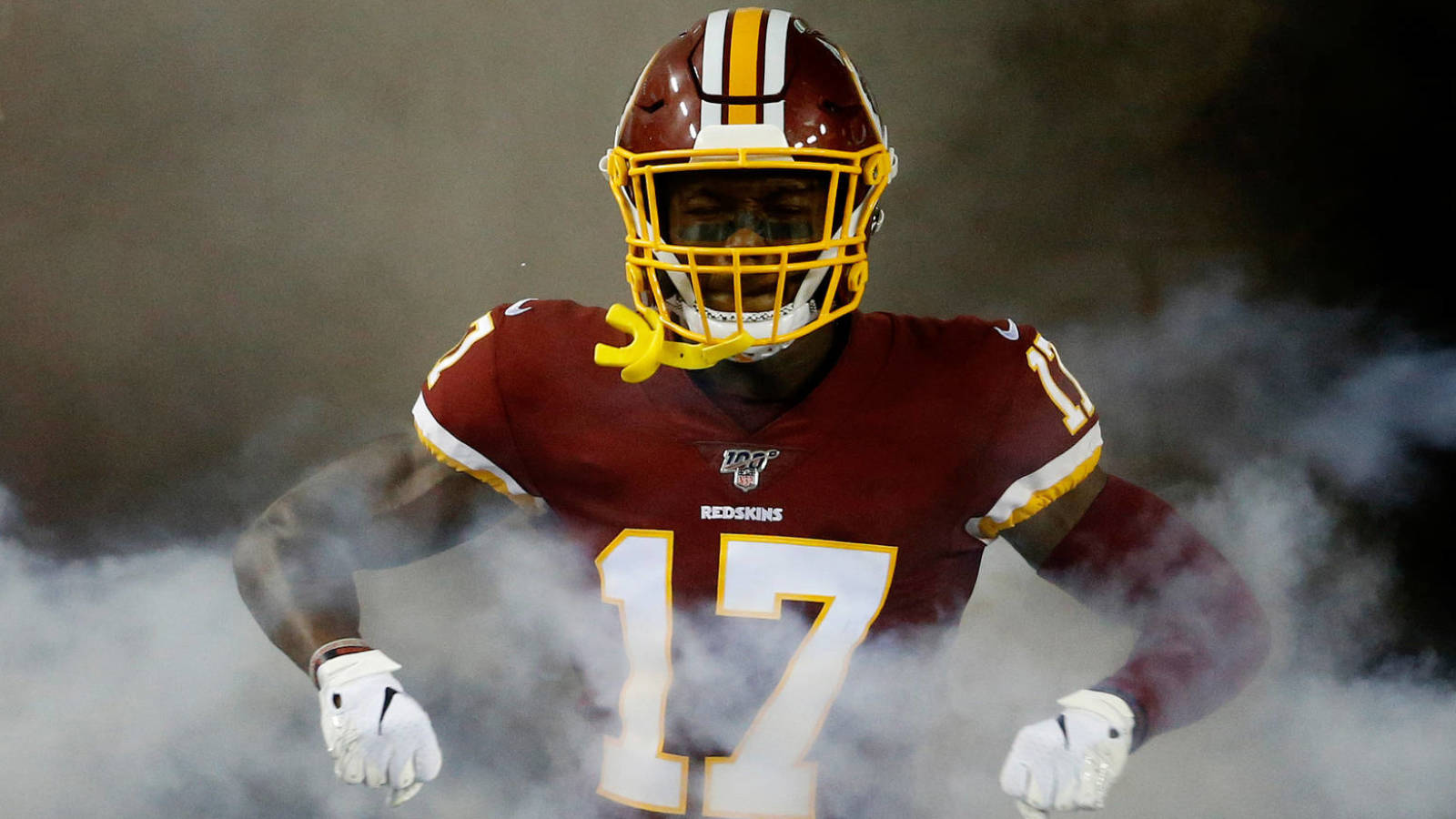
Washington Redskins (3-13) | Roster rating: 3
TOP NEEDS: Tight end, offensive line, wide receiver
ROSTER ANALYSIS: Still tasked with carrying QB Alex Smith’s lofty cap figure on their payroll, the Redskins again enter an offseason at a disadvantage. The team features numerous needs and will give the keys to a new front-office boss after dismissing 10-year football-ops czar Bruce Allen. Washington’s top two tight ends contributed next to nothing this season; it’s a good bet Jordan Reed and Vernon Davis will not be back. A Reed release would save $8.5 million. Pro Bowl guard Brandon Scherff hitting the market would put him in line to command a position-record contract. It will likely take the franchise tag for the Redskins to prevent that. But with all offensive linemen grouped together under the tag, it would cost Washington approximately $15M to tag Scherff. There’s a reason no guard has been tagged since the Patriots cuffed Logan Mankins in 2011. Tackle Trent Williams remains in limbo. The Redskins botched a chance to trade their seven-time Pro Bowl LT before the October deadline and will likely receive lesser offers for a soon-to-be 32-year-old blocker with health issues. With Washington in position to land Ohio State DE Chase Young, its defense does not figure to be as big an issue. But its best (so far) 2019 draftee could use help. Terry McLaurin needs a sidekick wideout, a role that proved too much for cut candidate Paul Richardson.
PROJECTED 2020 CAP SPACE: $43.4 million
More must-reads:
- NFL first-round mock: Alabama's Tua Tagovailoa to ...
- AFC South check-in: Most, least improved position groups post-draft
- The 'First round wide receivers' quiz
Breaking News
Customize Your Newsletter
 +
+
Get the latest news and rumors, customized to your favorite sports and teams. Emailed daily. Always free!

